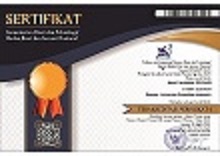The Effectiveness of Communal Spaces in The Mansion Jasmine and Rainbow Springs CondoVillas Apartments
Abstract
Full Text:
PDFReferences
Alexander, C., Ishikawa, S., & Silverstein, M. (1977). A pattern language: Towns, buildings, construction. Oxford University Press.
Appleyard, D. (1981). Livable streets. University of California Press.
Carmona, M. (2021). Public places urban spaces: The dimensions of urban design (3rd ed.). Routledge.
Carmona, M., Heath, T., Oc, T., & Tiesdell, S. (2010). Public places, urban spaces: The dimensions of urban design (2nd ed.). Routledge.
Clifford, B., & Morphet, J. (2020). Shared spaces, shared futures: Planning socially cohesive communities. Policy Press.
Gehl, J. (2011). Life between buildings: Using public space. Island Press.
Gifford, R. (2007). The consequences of living in high-rise buildings. Architectural Science Review, 50(1), 2–17. https://doi.org/10.3763/asre.2007.5002
Jacobs, J. (1961). The death and life of great American cities. Random House.
Jan, G. (2010). Cities for people – The importance of public spaces in high-density living. Urban Studies Journal, 47(3), 678–692.
Jan, G., & Svarre, B. (2013). How to study public life. Island Press.
Litman, T. (2021). Urban sanity: Understanding urban mental health impacts and how to create saner, happier cities. Victoria Transport Policy Institute.
Lynch, K. (1960). The image of the city. MIT Press.
Mehta, V. (2013). The street: A quintessential social public space. Routledge.
Montgomery, C. (2013). Happy city: Transforming our lives through urban design. Farrar, Straus and Giroux.
Montgomery, J. (1998). Making a city: Urbanity, vitality and urban design. Journal of Urban Design, 3(1), 93–116. https://doi.org/10.1080/13574809808724418
Moughtin, C. (2003). Urban design: Street and square (3rd ed.). Routledge.
Oldenburg, R. (1989). The great good place: Cafes, coffee shops, community centers, beauty parlors, general stores, bars, hangouts, and how they get you through the day. Paragon House.
Oldenburg, R. (1999). The great good place: Cafés, coffee shops, bookstores, bars, hair salons, and other hangouts at the heart of a community. Marlowe & Company.
Project for Public Spaces. (2000). How to turn a place around: A handbook for creating successful public spaces. Project for Public Spaces.
PT Summarecon Agung Tbk. (2018). Rainbow Springs CondoVillas: The future of community living. Summarecon.
PT Summarecon Agung Tbk. (2023). Summarecon Bandung: Masterplan & development strategy. Summarecon.
Putnam, R. D. (2000). Bowling alone: The collapse and revival of American community. Simon & Schuster.
Rapoport, A. (1977). Human aspects of urban form: Towards a man–environment approach to urban form and design. Pergamon Press.
Relph, E. (1976). Place and placelessness. Pion.
Summarecon Serpong. (2020). Rainbow Springs CondoVillas: Green living concept for urban community. Summarecon.
Talen, E. (2018). Neighborhoods for people: 50 years of planning theory & practice. Routledge.
The Mansion at Kemayoran. (2019). The Mansion Jasmine: A premium vertical living experience. The Mansion Official Publication.
Tibbalds, F. (2001). Making people-friendly towns: Improving the public environment in towns and cities. Taylor & Francis.
UN-Habitat. (2016). Global public space toolkit: From global principles to local policies and practice. UN-Habitat.
Whyte, W. H. (1980). The social life of small urban spaces. The Conservation Foundation.
Yunus, H. S. (2020). Perilaku manusia dan lingkungan dalam perspektif arsitektur. Gadjah Mada University Press. (Original work published in Indonesian)
DOI: https://doi.org/10.17509/jaz.v8i2.84518
Refbacks
- There are currently no refbacks.
Copyright (c) 2025 Jericho Jony, Yohanes Basuki Dwisusanto

This work is licensed under a Creative Commons Attribution-ShareAlike 4.0 International License.





